

IstariJediDad
gamer level 4
1782 xp
1782 xp
followers
12
12
Use my invite URL to register (this will give me kudos)
https://boardgaming.com/register/?invited_by=istarijedidad
profile badges




recent achievements

Explorer - Level 3
Earn Explorer XP to level up by completing Explorer Quests!
Earn Explorer XP to level up by completing Explorer Quests!

I Got What I Wanted
Add a game to your Owned list that was previously in your Wish list.
Add a game to your Owned list that was previously in your Wish list.

Rated 25 Games
Rate 25 games you have played.
Rate 25 games you have played.

Amateur Reviewer
Review 3 games and receive a total of 40 positive review ratings.
Review 3 games and receive a total of 40 positive review ratings.
Player Stats
Critic (lvl 1)
240 xp
240 xp
Explorer (lvl 3)
711 xp
711 xp
Professor (lvl 1)
145 xp
145 xp
Reporter (lvl 1)
127 xp
127 xp
About Me
After getting into the hobby about a year ago, i wish i played half of the games i purchased!
With kids: Forbidden Island, TTR, Summoner Wars, Drizzt/Ashardalon, Survive!..., Hey...Fish, X-Wing. With adult couples: Catan, TTR, Carcassonne


























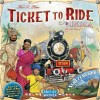



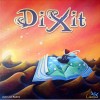

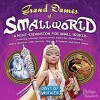











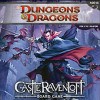




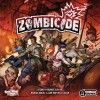
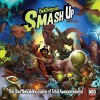

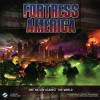



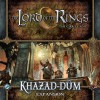
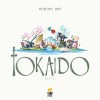













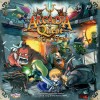

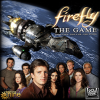

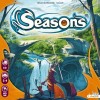


























Dungeons & Dragons: Wrath of Ashardalon
Bottom Line Up Front: Yes, the game has its design flaws. But my family loves it; we always have a great time and keep coming back. Wrath of Ashardalon is a cooperative dungeon crawl and every player is in the hero party (no one needs to exclusively control the “bad guys” as I understand is required in Descent, Doom, Super Dungeon Explore, etc). Compared to “Drizzt” and “Ravenloft”, the other two games in the D&D Adventure System series, this game has the most traditional (trying to say “generic” as a positive) aesthetic. The big boss is a Red Dragon, the archetypal D&D villain.
Components: Extremely satisfying, just like the others in the series. The big, heavy box is irresistible. The approx 40minis are plastics from a previous D&D line (most are great sculpts, some are simply “good”), very sturdy interlocking dungeon floor tiles, 200 cards, rule book + scenario book, and piles of tokens/chits/cardboard pieces (many used rarely/sparingly to support a specific scenario). It’s very hard to nitpick with components. If I had to pick flaws: books are a little thin/flimsy (but within industry standard) and books could use some additional theme artwork to help establish feel. MSRP of $64.99 seems very reasonable, though it can be found for substantially less online.
Gameplay: A player’s turn consists of three phases. In “Hero Phase” the current player generally attacks then moves, or he moves then attacks. An “Explore Phase” allows a hero on an unexplored edge of a floor tile to draw and place a new tile on the edge, expanding the dungeon. A monster is drawn and placed on the new tile’s designated area and is controlled by this player. In “Villain Phase” the player draws and plays encounter cards (only if no new tile was placed or tile had a black arrow). Encounters are bad things, generally, like additional monsters, explosions, poisons, etc. The current player then moves and attacks with monsters in his control according to the AI printed on the respective cards (monsters can attack any player but are controlled by one). Next player… This more or less continues (with the expected variants and exceptions depicted on Encounter and Monster cards) until a key tile is drawn triggering some big boss showdown, desired item to retrieve, or other victory criteria. As you might expect it is frowned upon to have your characters die.
There are a number of different scenarios provided to keep things fresh. Many of the scenarios introduce alternative rules and many are supported with a fistful of chits designed just to support that campaign. Significant variety is afforded. You get different abilities to pick from for each character; some can be used as much as you want, some saved for special occasions. Defeating monsters will earn treasure and items ranging from possibly useful to very powerful. Attacks are determined by rolling a 20-sided die, adding modifiers specific to the creature/player ability and subtracting specified armor class. Damage is set (no other dice used). The monsters keep coming, but one or two hits usually defeat them (but there are a few heavyweights…). It’s generally the quantity and the negative encounters that stack up against you.
“Ashardalon” is the most “generic” in the series, but I actually wish the heroes were even more traditional. There are five to choose from including a dragon-man wizard (Dragon-born?) and a half-orc rogue. I would have liked an elf ranger and a human wizard with robes and a beard. Really obvious stuff, but one of these games should offer it. In fairness there is a paladin and a dwarf fighter, but they are both female which rules them out for my son so far. There was a Dragon-born in Ravenloft as well. I played 1st and 2nd edition AD&D as a youth and these certainly were not a staple, but perhaps they are all the rage today. (“Back in my day a Drow was an incredibly rare and unusual creature…”)
For those that thought Ravenloft was too brutal on the players, and for those that thought the heroes in Drizzt were too powerful, this game probably comes closest in the series to the balance sweet-spot.
The game is not perfect. There are plenty of instances where encounter or monster text isn’t clear. There are moments, however rare, of confusion and the need for a “judgment call”. Often it’s as simple as a monster is equidistant from two players: who does he attack? Do we pick what is advantageous to the party? To the Monster? Flip a coin? In the spirit of this game, these flaws did not really detract from the experience. In some ways it fits the D&D theme (the decisive DM in me since childhood comes out and we move on continuing the fun). But I realize there are board gamers who prize games for their elegance, purity, and flawlessness of mechanics. I like the gameplay. It works. But it sometimes feels less like flowing poetry and more like a locomotive fully capable of crushing occasional debris on the tracks.
Solo play: It is listed as for 1-5 players. While the guide provides a solo adventure and more could be developed, I do not feel that it is that much fun. I viewed this as a tool to familiarize myself with the mechanics before teaching the kids. I hesitate to recommend this to someone looking for a solitaire experience (though painting the minis was a very satisfying way to appreciate the game solo for me).
Summary: You’ll be happy…
1) if you like great miniatures and components (and/or enjoy painting them)
2) if you’re looking for a fully cooperative adventure (no one has to be the “bad guys”),
3) because the many characters, scenarios, and bosses provide a lot of replayability,
4) if you’d enjoy a quick single-night D&D experience
But you’ll have to live with…
1) sometimes confusing or contradictory text on cards, and
2) a lot of moving parts; be prepared to nudge the experience forward occasionally.
Pardon me for borrowing language from my “Drizzt” review. My family’s has had a lot of fun with this series. I feel the game warranted my rating, which I suspect is above online gaming community norm. I hope this info and discussion of the games quirks can help you decide if this could be a fit for you as well. I also thought enough of this as a value to purchase all three games.
Regards,